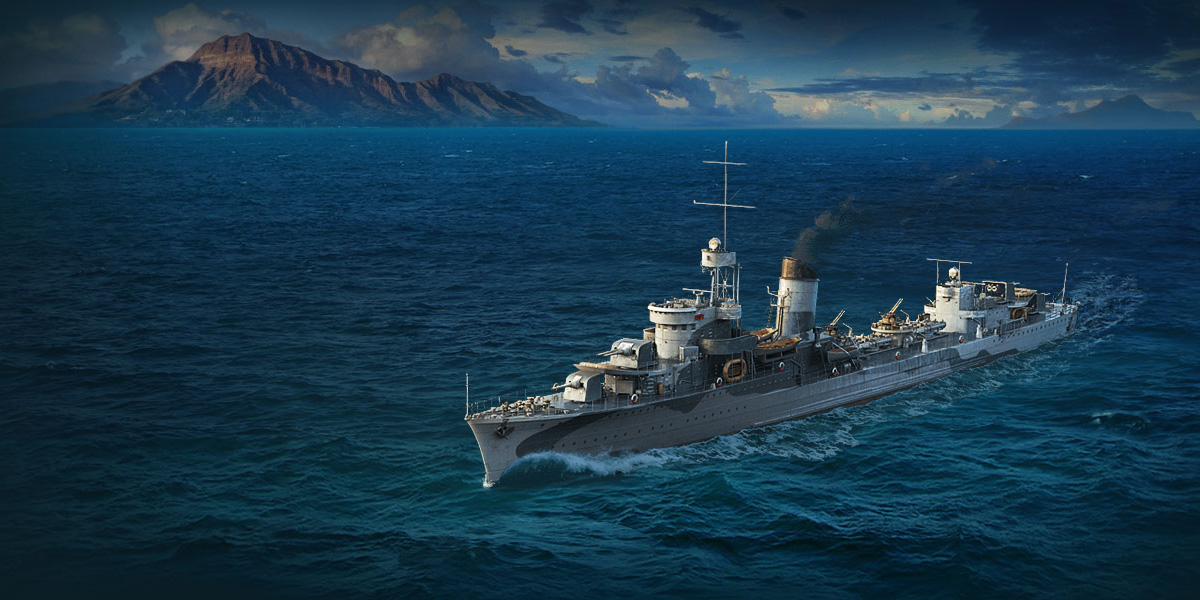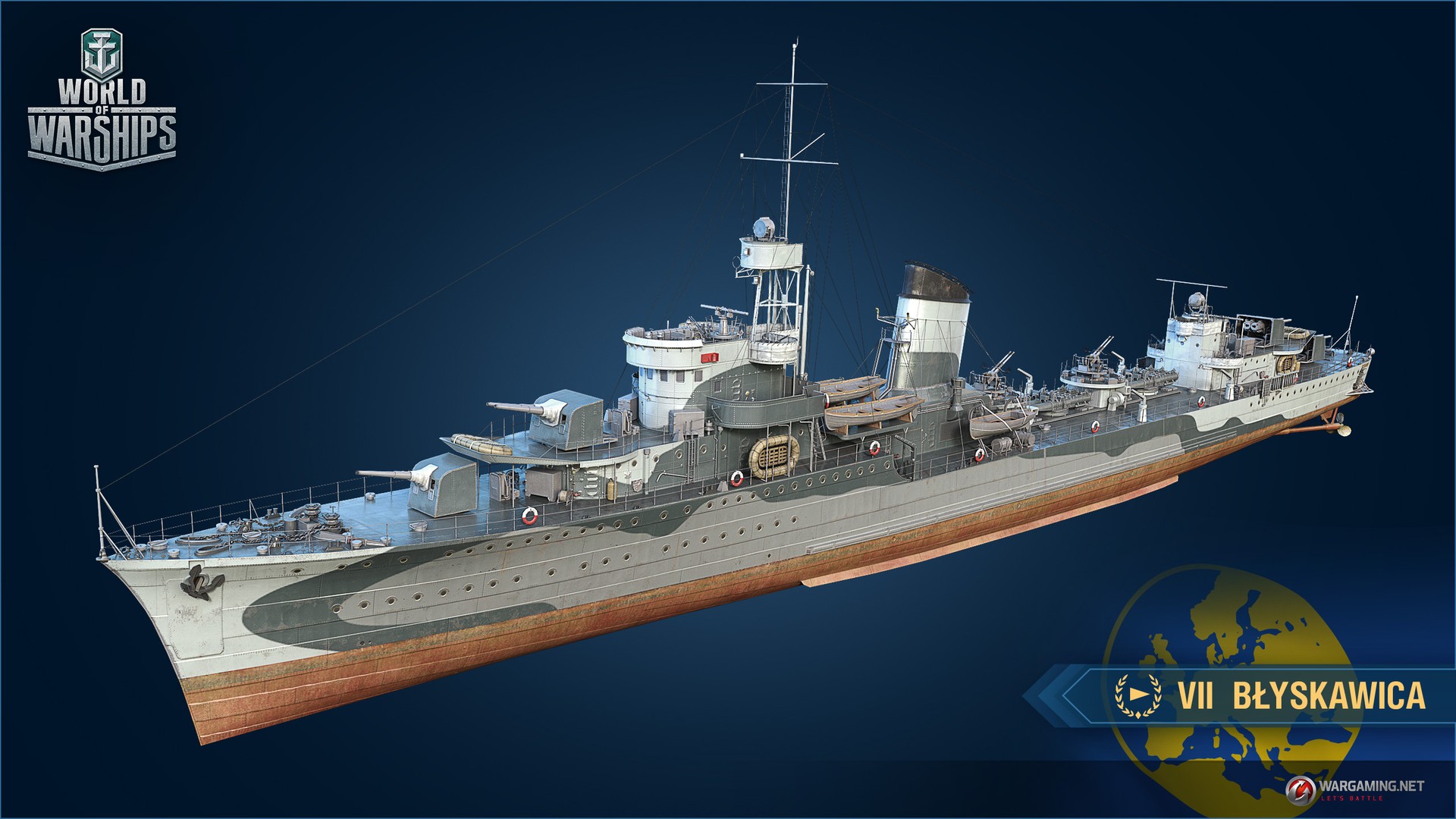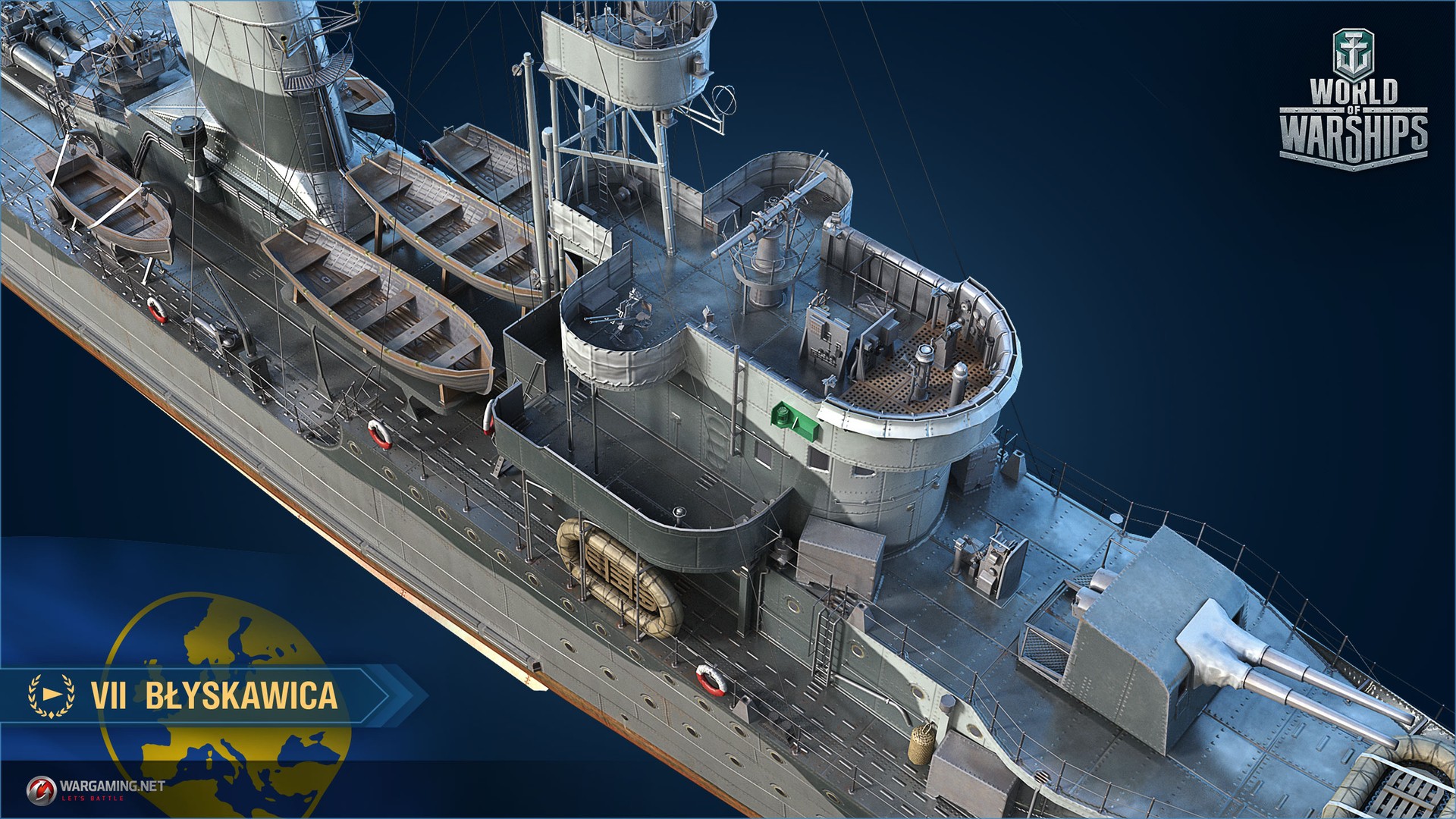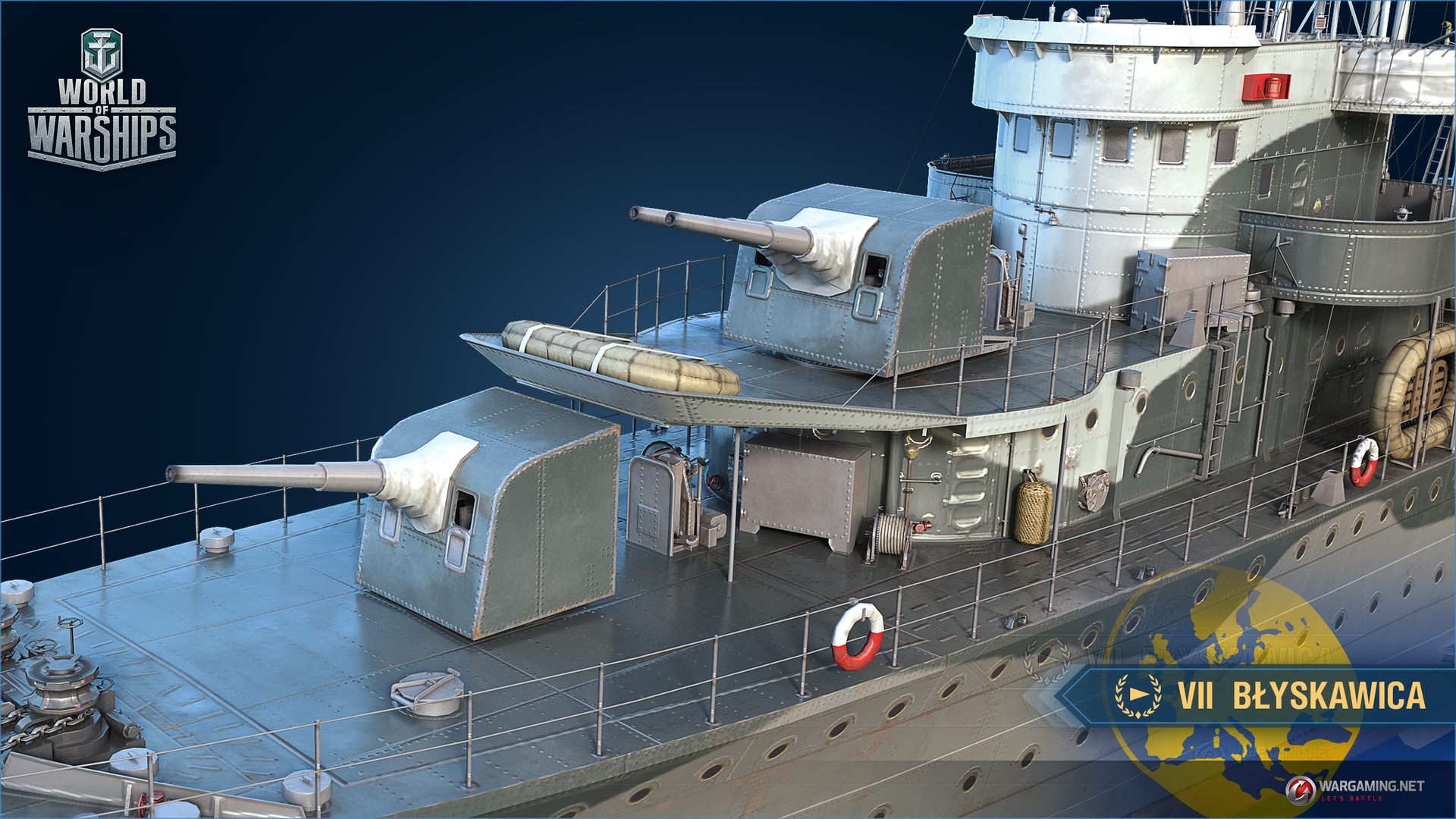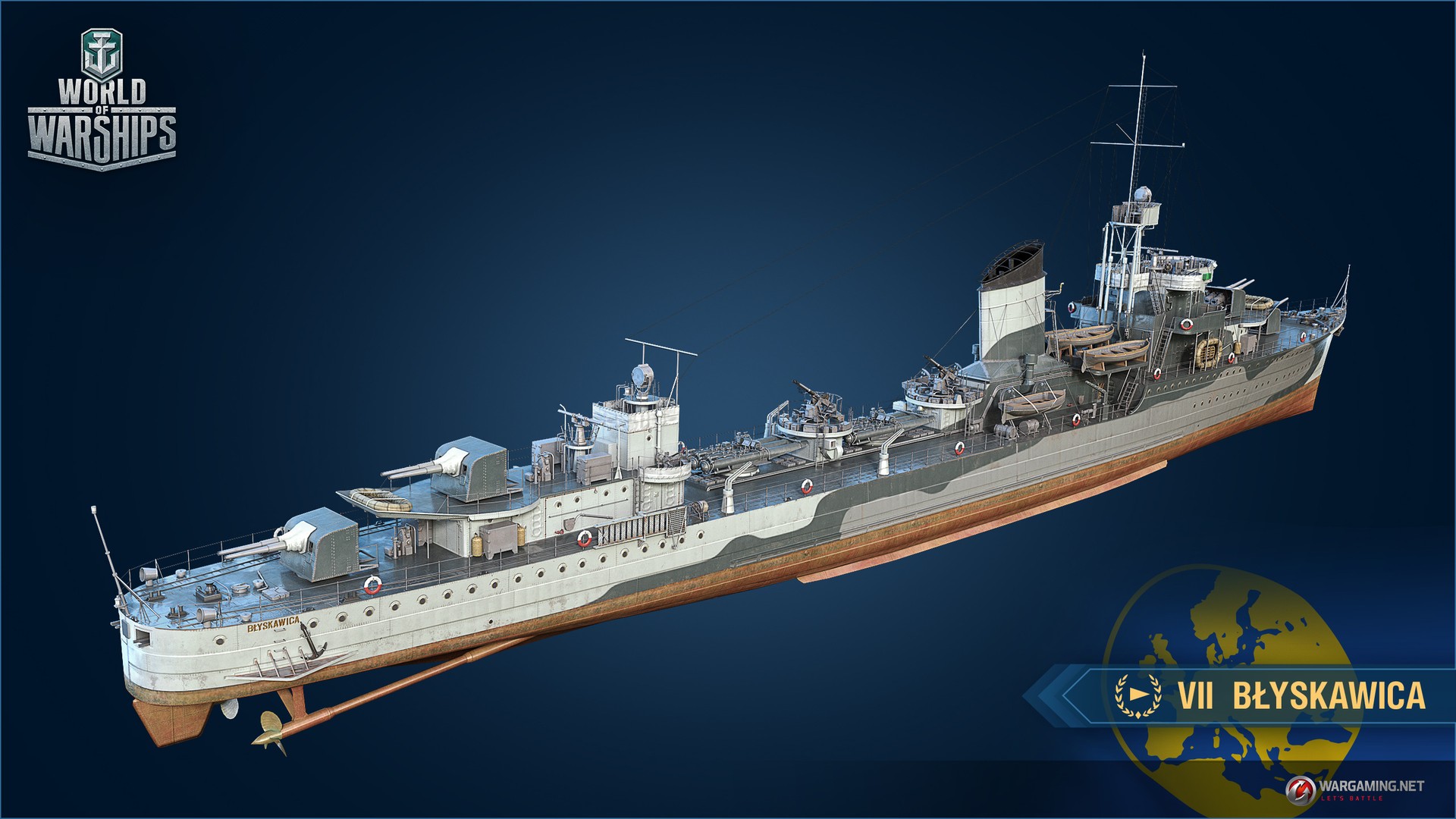Armada: Błyskawica
 Destroyer Błyskawica was one of the most powerful and fastest ships of her type built in the 1930s.
Destroyer Błyskawica was one of the most powerful and fastest ships of her type built in the 1930s.She took part in the battle for Norway and the landings in Normandy, defended British cities from the raids of German bombers, and hunted for submarines. After World War II, the ship remained in service in the Navy of the Polish People’s Republic until 1976, becoming a museum ship afterwards. Błyskawica is the world's oldest surviving destroyer. Now you have a chance to take command of her in World of Warships!
[previewyoutube][/previewyoutube]
History
In the early 1930s, the small Polish Navy was in great need of new modern warships. In May 1933, Rear Admiral Jerzy Świrski, the Commander of the Polish Navy, announced a tender for the construction of two new destroyers. It was originally planned that French shipbuilders, who had already built two Wicher-class destroyers for the Polish Navy (based on the design of the Bourrasque-class ships), would do the job. However, negotiations with all the French shipyards failed. In early 1934, the order was offered to Swedish shipbuilders, but they rejected it as well. Finally, in 1935, the Poles chose the British project proposed by the famous J. Samuel White company. In September of the same year, the construction of two ships began at the shipyards in Cowes in the south of England. The ships received their names in accordance with the traditions for Polish Navy destroyers—in honor of weather phenomena: Grom (Polish for "thunder") and Błyskawica (Polish for "lightning").
The new class of destroyers turned out to be extremely powerful. Błyskawica, which entered service on November 25, 1937, was armed with seven 120 mm main battery guns (more than some World War I cruisers), two twin 40 mm AA guns, four twin machine gun mounts, two triple torpedo tubes, and a large reserve of depth charges. Most of the weapons were made in Sweden. On top of the aforementioned features, the new Polish ship reached speeds of up to 39 knots during her trials, beating other similarly armed destroyers of that period, such as the British Tribal-class destroyers. This was achieved at the price of reduced seakeeping characteristics, but they were still considered sufficient for the Baltic Sea.
Just prior to the outbreak of World War II, Błyskawica, Grom, and an older French-built destroyer, Burza, were transferred from the Baltic to the U.K. Błyskawica joined the British Navy as an Allied ship, taking part in battles under the Polish flag.
The destroyer debuted in combat just a week after the war began—on September 7, 1939. Błyskawica attacked a German submarine, but without success. However, the real action for the Polish sailors began in April and May 1940, when their ship took part in the Norwegian campaign. Błyskawica bombarded German positions, managed to shoot down two aircraft, and returned to the U.K. safe and sound. Grom wasn't so lucky—she was destroyed during a German bomber raid.
Right afterwards, Błyskawica participated in the evacuation of British troops from Dunkirk during Operation Dynamo, and then she was mainly engaged in escorting convoys and hunting German U-boats in the Atlantic. Błyskawica accompanied the liner, Queen Mary, which had been converted into a military transport ship. Most British destroyers found it difficult to keep up with the world's fastest liner, which was capable of maintaining an average speed of 28.5 knots while crossing the Atlantic. It didn’t pose a problem for the Polish "Lightning."
From June to November 1941, the destroyer underwent an overhaul and repairs, which included refurbishment at her native shipyard in Cowes. During this, her Swedish 120 mm guns were replaced with eight British 102 mm dual-purpose guns in four twin mounts. In April 1942, a storm damaged the ship's propulsion unit, which put Błyskawica out of action until mid-July. On the night that bridged May 4 and 5, 1942, 160 German bombers attacked Cowes. During the raid, Błyskawica supported the Allies with fire from her AA guns, while her crew actively participated in firefighting and rescuing the injured. In 2004, a town square in Cowes was named Francki Place, in honor of Błyskawica's Commander, komandor porucznik Wojciech Francki.
In 1944, Błyskawica, as part of the 10th Destroyer Flotilla, along with British and Canadian destroyers, took part in Operation Overlord, supporting the landings of the Allied forces in Normandy. On June 9, in the English Channel, eight Allied destroyers discovered and attacked a detachment of three German destroyers and one torpedo boat. The battle at Ushant was the only engagement involving surface warships in which destroyer Błyskawica took part. At the same time, it was the last action of large German ships in the west and the final major naval battle in the European theater. This battle marked a decisive victory for the Allies—the Germans lost two of the four ships, and were unable to complete their missions.
In May 1946, flags were taken down on Polish ships and their crews were demobilized. The ships were formally transferred to the British Navy reserve, but Royal Navy flags were never raised on them. Between 1951 and 1952, the ship underwent another overhaul. This time, the British artillery was replaced with Soviet 100 mm B-24 guns.
In 1956, the ship reached an incredible 33 knots on measured distance, but recurrent technical challenges with her propulsion, as well as radio and electronic equipment, were indicative of a need for more repairs. The ship underwent overhauls in 1957–1961 and 1965–1966, but in 1967, a serious propulsion unit accident occurred, killing several crew members. Since the restoration of the ship would have required replacing all her steam pipelines, it was decided that her further operation was inexpedient. She was converted into a coastal AA defense ship, and in 1976, was permanently berthed in Gdynia as a museum ship. In 1987, the Polish Navy veteran ship was awarded the Golden Cross of the Virtuti Militari Order—the country's highest military award. Before her, not a single ship under the Polish flag had received such an honor. In 2006, Błyskawica was "twinned" with her long-time comrade-in-arms, Canadian destroyer Haida, which is also preserved as a museum ship in Hamilton.

Modeling the ship
In the game, the ship is featured in her state as of 1939, when World War II began.
 Main battery: Seven 120 mm/50 Bofors guns in three twin and one single turrets.
Main battery: Seven 120 mm/50 Bofors guns in three twin and one single turrets. Torpedo armament: Two triple 533 mm torpedo tubes.
Torpedo armament: Two triple 533 mm torpedo tubes. Anti-aircraft armament: Two twin 40 mm Bofors AA gun mounts and four twin machine gun mounts with 13.2 mm Hotchkiss machine guns.
Anti-aircraft armament: Two twin 40 mm Bofors AA gun mounts and four twin machine gun mounts with 13.2 mm Hotchkiss machine guns.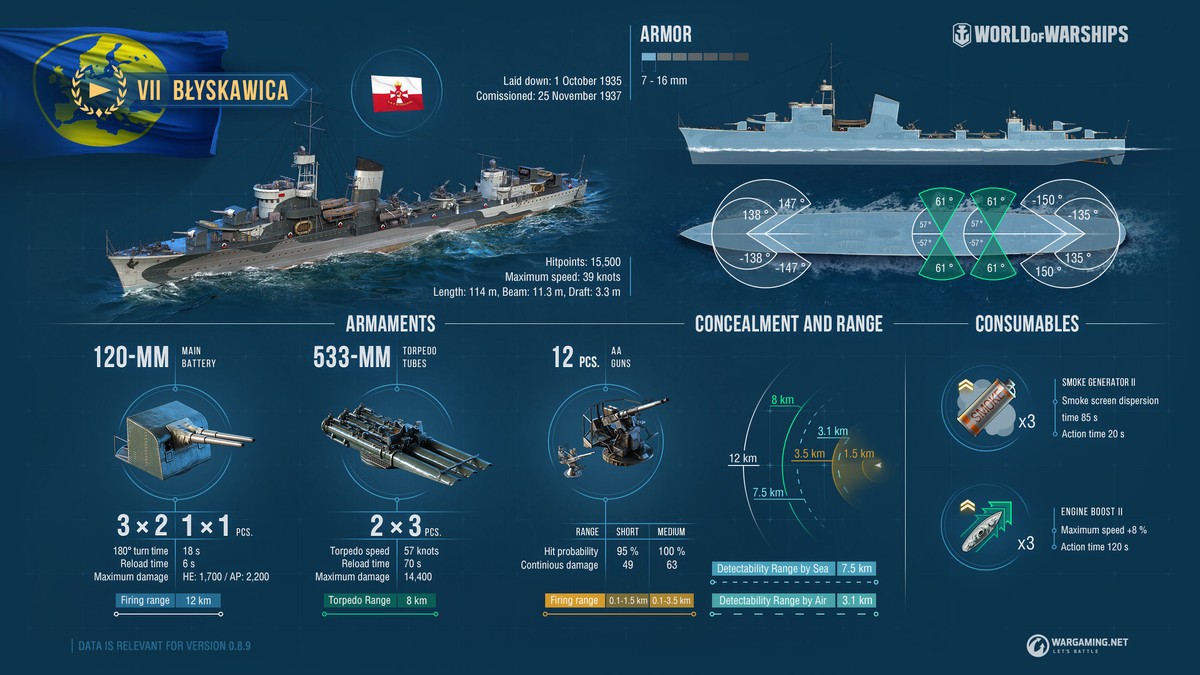
Commanding Błyskawica
Commander with 10 skill points
- Priority Target
- Last Stand
- Survivability Expert
- Concealment Expert
Commander with 19 skill points
- Priority Target
- Last Stand
- Survivability Expert
- Concealment Expert
- Inertia Fuse for HE Shells
- Basic Firing Training
- Jack of All Trades
The ship has four slots for upgrades. We consider the following combinations to be the most effective:
- Main Armaments Modification 1
- Steering Gears Modification 1 or Engine Boost Modification 1
- Aiming Systems Modification 1
- Steering Gears Modification 2
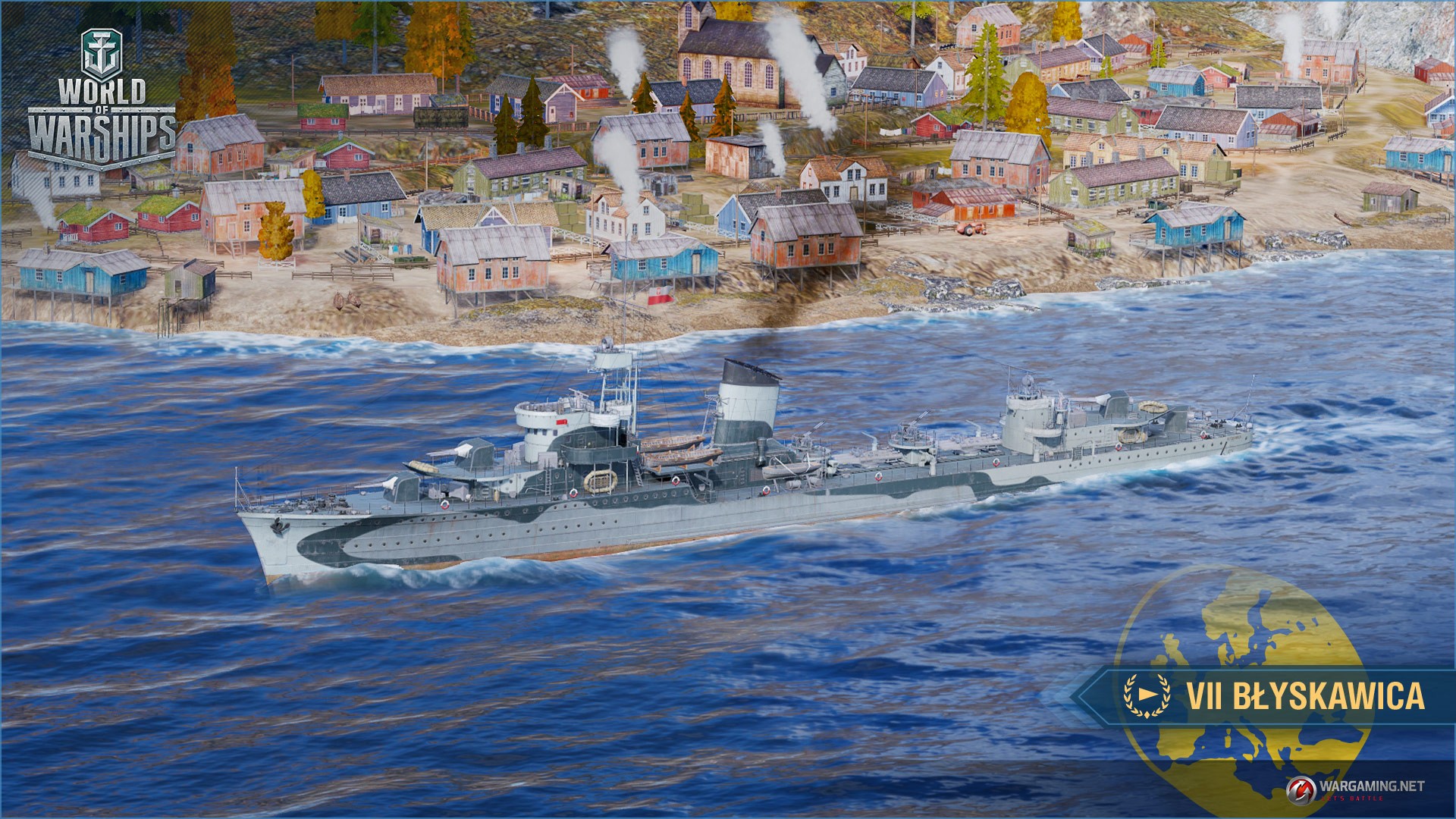

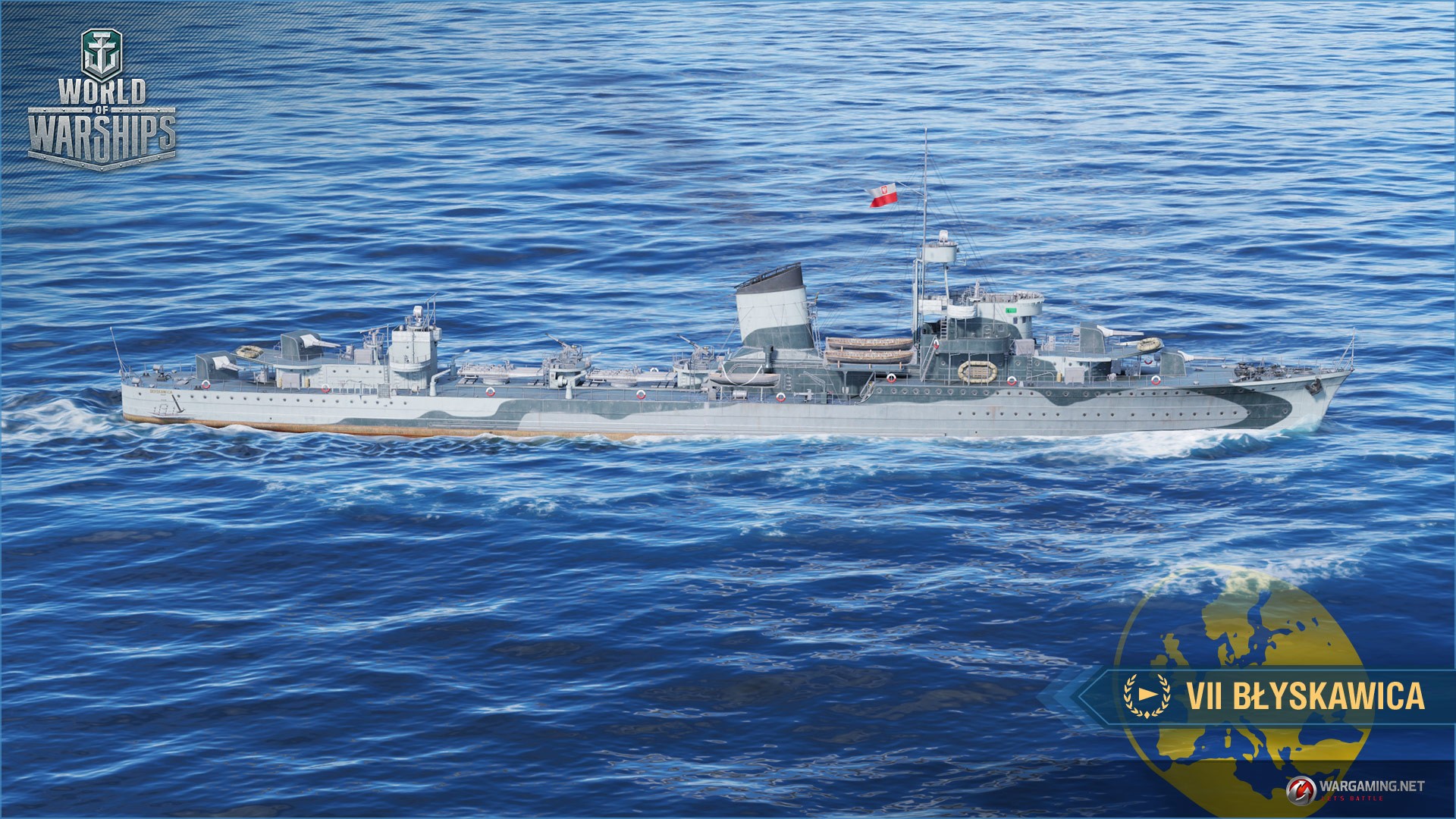
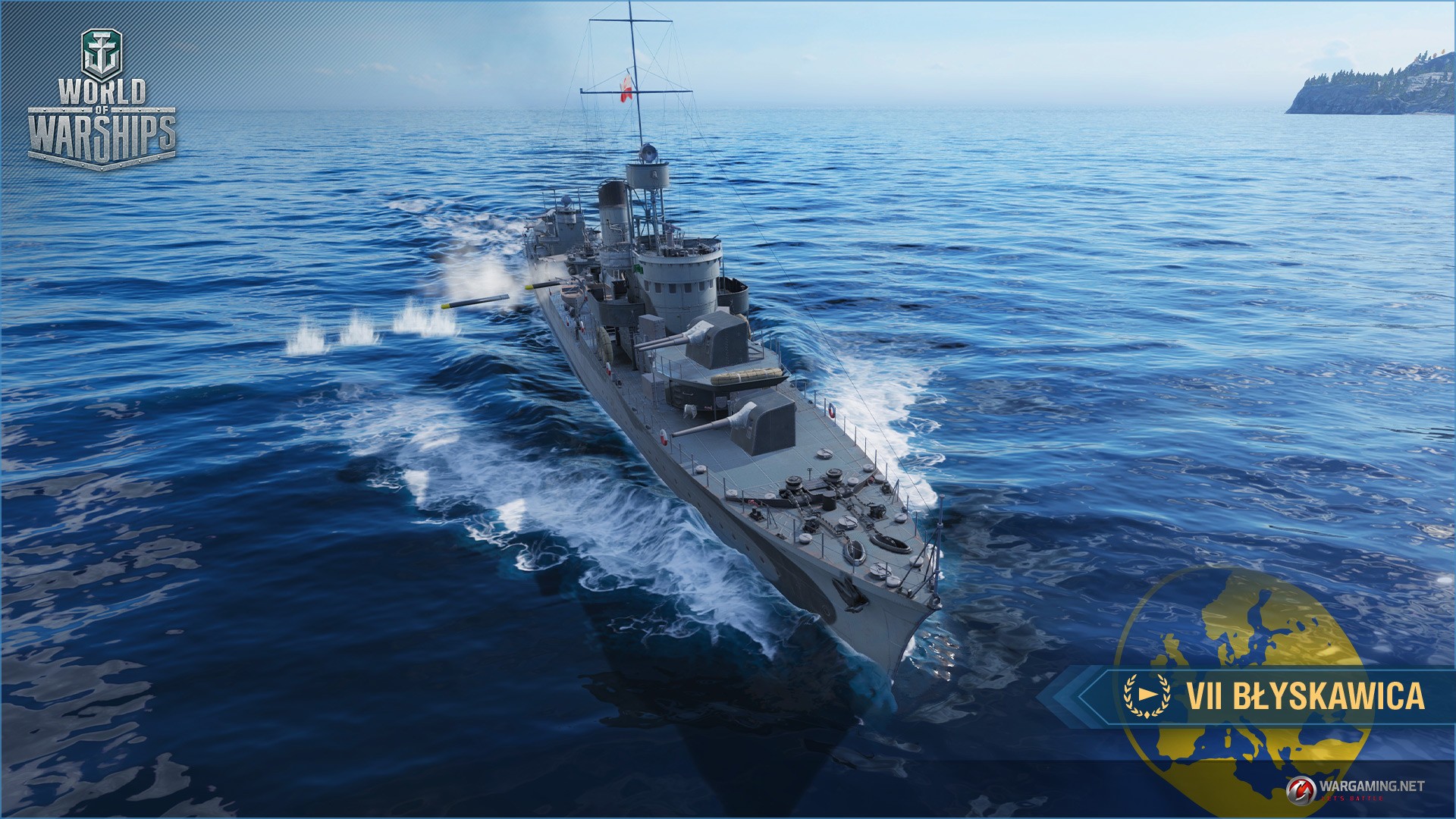
Błyskawica in battle
One of the strongest destroyers of her time. Polish Navy ship
- Excellent speed of 39 knots
- Nice HP pool for a destroyer
- Seven rapid-firing 120 mm guns with a good reach and comfortable ballistics
- Effective torpedoes with a range of 8 km and a fast reload time—within 70 seconds
- She earns extra credits per battle, and her permanent camouflage provides 50% more XP and reduces the cost of the ship's post-battle service by –10%
